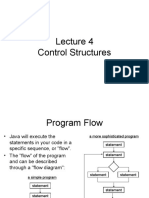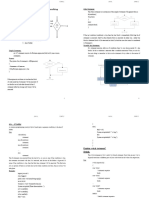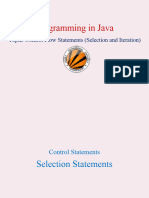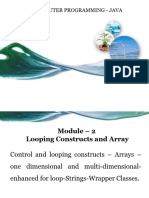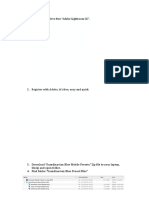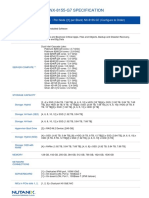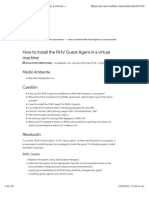0% found this document useful (0 votes)
70 views33 pagesL04 - Control Structures
Control structures allow programmers to alter the natural sequence of execution in a Java program. The document discusses different types of control structures including block statements, decision statements like if/else and switch statements, and loops like for, while, and do-while loops. If/else statements and switch statements allow executing code conditionally based on boolean expressions or case values. Loops allow repetitive execution of code, with for loops, while loops, and do-while loops differing in their initialization, condition checking, and increment behaviors. Break and continue statements can be used to control flow within loops.
Uploaded by
Joseph Appiah JnrCopyright
© Attribution Non-Commercial (BY-NC)
We take content rights seriously. If you suspect this is your content, claim it here.
Available Formats
Download as PPT, PDF, TXT or read online on Scribd
0% found this document useful (0 votes)
70 views33 pagesL04 - Control Structures
Control structures allow programmers to alter the natural sequence of execution in a Java program. The document discusses different types of control structures including block statements, decision statements like if/else and switch statements, and loops like for, while, and do-while loops. If/else statements and switch statements allow executing code conditionally based on boolean expressions or case values. Loops allow repetitive execution of code, with for loops, while loops, and do-while loops differing in their initialization, condition checking, and increment behaviors. Break and continue statements can be used to control flow within loops.
Uploaded by
Joseph Appiah JnrCopyright
© Attribution Non-Commercial (BY-NC)
We take content rights seriously. If you suspect this is your content, claim it here.
Available Formats
Download as PPT, PDF, TXT or read online on Scribd
/ 33
